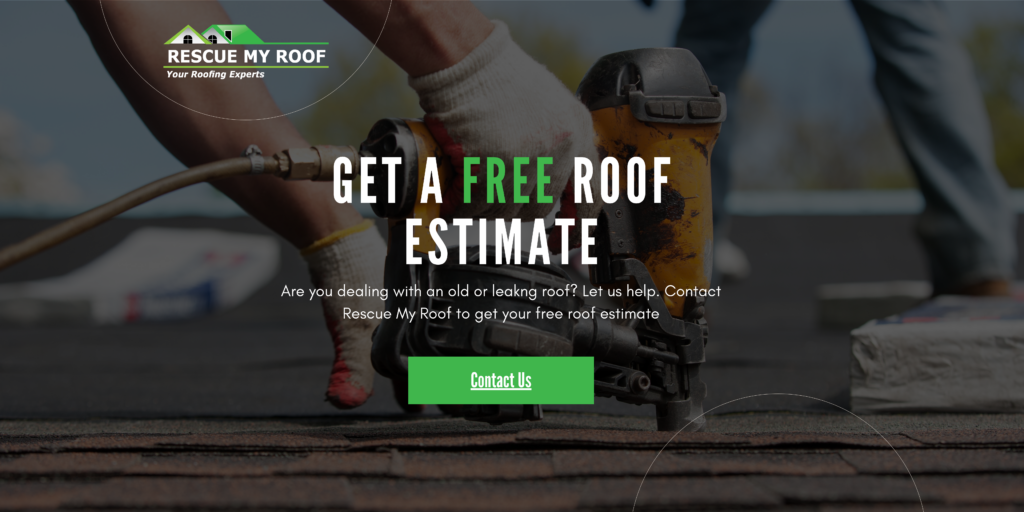The Dangers of Roofing: What You Need to Know Before Climbing Up
Roofing is one of the most physically demanding and dangerous jobs in the construction industry. Whether you’re a DIY homeowner looking to fix a few shingles or a professional contractor, the risks involved in roofing cannot be overstated. From falls and weather hazards to exposure to harmful materials, roofing work presents numerous dangers that can result in serious injuries or even fatalities.
For over a decade, Rescue My Roof has been a leader in the roofing industry. We’ve helped thousands of homeowners protect their homes and families. Today, we’re using our expertise to guide you to safety through the roofing process.
In this article, we’ll explore the most common dangers of roofing, why safety is critical, and what precautions both homeowners and professionals should take to protect themselves on the roof. Ultimately, you’ll know the safest way to repair or replace your roof.
The Top 6 Dangers of Roofing
The safest way to repair or replace your roof is to hire a trained professional. But, if you’re not quite convinced yet, here are the top six roofing dangers you should be cautious about:
1. Falls: The Leading Cause of Roofing Accidents
Falls are the number one cause of injuries and fatalities in the roofing industry. The combination of working at heights, uneven surfaces, and slippery conditions makes falling from a roof a constant threat. Even a fall from a one-story roof can cause severe injuries such as broken bones, concussions, or worse.
Key risks of falling include:

- Uneven or Unstable Surfaces: Roofs can be unpredictable, with varying pitches and weak spots that can cause workers to lose their footing.
- Slippery Conditions: Rain, snow, ice, and even dew can make a roof slippery, increasing the likelihood of falls.
- Unsecured Ladders and Scaffolding: Improperly secured ladders or scaffolding can slip, leading to dangerous falls while getting on or off the roof.
Safety Precautions:
- Always use proper fall protection gear, including harnesses, lanyards, and anchors.
- Ensure ladders and scaffolding are securely placed and stabilized before climbing.
- Avoid working on wet or icy roofs whenever possible.
2. Weather Hazards: Heat, Wind, and Storms
Roofers work in all types of weather conditions, which can add significant risks to the job. Extreme heat, high winds, and sudden storms are just a few of the weather-related dangers that can affect roofing work.
Key weather-related dangers include:
- Heat Exhaustion and Heat Stroke: Working in direct sunlight during hot summer months can lead to dehydration, heat exhaustion, or even heat stroke. Roofs can become extremely hot, amplifying the risk of overheating.
- High Winds: Strong winds can destabilize ladders, blow away roofing materials, and make it difficult to maintain balance, increasing the risk of accidents.
- Lightning and Storms: Roofing during thunderstorms or lightning can be extremely dangerous, especially with the use of metal tools and equipment.
Safety Precautions:
- Stay hydrated and take regular breaks in shaded areas during hot weather.
- Wear light, breathable clothing and use sun protection to prevent sunburn and overheating.
- Always check the weather forecast before starting roofing work and avoid working during high winds or thunderstorms.
3. Dangerous Tools and Equipment

Roofing requires the use of various tools and equipment, some of which can pose serious risks if not used correctly. Nail guns, power saws, and other sharp tools are often part of roofing jobs and can cause severe injuries.
Common tool-related dangers include:
- Nail Gun Accidents: Nail guns, when used improperly, can cause puncture wounds or even shoot nails into limbs or other parts of the body.
- Cuts and Lacerations: Roofing materials such as metal flashing, shingles, and tiles can have sharp edges that can lead to cuts and lacerations if not handled carefully.
- Falling Tools: Tools dropped from a roof can injure workers below or cause damage to property.
Safety Precautions:
- Ensure proper training on how to safely use all roofing tools and equipment.
- Wear protective gear, including gloves, safety glasses, and steel-toed boots, to minimize the risk of injuries.
- Keep tools secure when not in use to prevent accidental falls from the roof.
4. Electrical Hazards: Working Near Power Lines
Roofing often requires work near electrical power lines, particularly on residential and commercial buildings. Accidental contact with power lines can result in electrocution, one of the most dangerous hazards roofers face.
Key electrical dangers include:
- Contact with Power Lines: Roofers who are unaware of nearby power lines or fail to maintain a safe distance can accidentally come into contact with live electrical wires.
- Faulty Electrical Systems: Working on older roofs with faulty wiring or improperly grounded systems can also present electrical hazards.
Safety Precautions:
- Always identify and avoid power lines when working on or near the roof.
- Use non-conductive ladders and tools when working near electrical lines.
- Keep a safe distance from power lines at all times—at least 10 feet away from overhead power lines.
5. Hazardous Materials: Exposure to Toxic Substances
Roofing can also expose workers to potentially harmful materials, including asbestos, lead, and mold. Older roofs, in particular, may contain hazardous materials that were once commonly used in construction.
Common hazardous materials include:
- Asbestos: Found in older roofing materials, asbestos exposure can cause serious health issues such as lung cancer and mesothelioma.
- Lead: Lead flashing or other components used in older roofs can pose a risk if inhaled or ingested.
- Mold and Mildew: Roofs with water damage or leaks may harbor mold, which can lead to respiratory problems when disturbed.
Safety Precautions:
- Wear proper protective gear, such as respirators and gloves, when handling or removing hazardous materials.
- Have your roof inspected by professionals to identify any potential hazards before starting work.
- Avoid disturbing or cutting into materials that may contain asbestos or lead without proper safety measures in place.
6. Fatigue and Overexertion
Roofing is physically demanding work that requires heavy lifting, repetitive motions, and long hours in challenging conditions. Overexertion can lead to muscle strains, injuries, or accidents caused by fatigue.
Common risks of fatigue include:
- Reduced Focus: Fatigue can lead to slower reaction times and reduced focus, increasing the risk of falls or tool-related accidents.
- Muscle Strain: Lifting heavy roofing materials or working in awkward positions can cause back, neck, and shoulder injuries.
Safety Precautions:
- Take regular breaks to rest and rehydrate, especially during long or physically demanding tasks.
- Use proper lifting techniques to prevent muscle strain, and don’t be afraid to ask for help with heavy or awkward materials.
- Avoid pushing through fatigue—working when you’re tired can lead to mistakes and accidents.
Roofing Safety Is Key
Roofing may be necessary to protect and maintain your home, but it’s not without its dangers. From falls and hazardous weather to electrical risks and dangerous tools, roofing work presents numerous hazards that must be addressed with caution.
If you’re a DIY homeowner, it’s important to understand the risks involved and take all necessary safety precautions before stepping onto the roof. For more complex or risky projects, hiring a professional roofing contractor with the experience and equipment to safely handle the job is often the best decision.
Roofing contractors and professionals are trained to navigate these dangers with safety protocols in place. Whether you’re fixing a small leak or undertaking a full roof replacement, prioritizing safety can make all the difference between a successful project and a preventable accident.
Learn more with “DIY Roof Repairs: What You Can and Can’t Do Yourself” and “DIY Roof Repair Mistakes to Avoid (& When to Call A Professional).”
Is your roof old or leaking? Rescue My Roof is here to help. Contact us today to get a free estimate.


